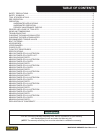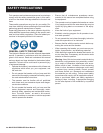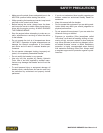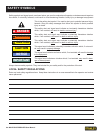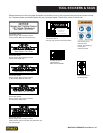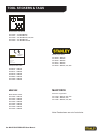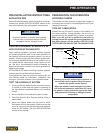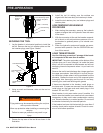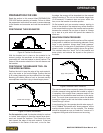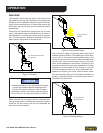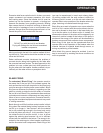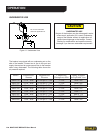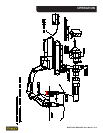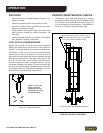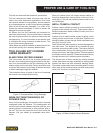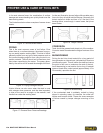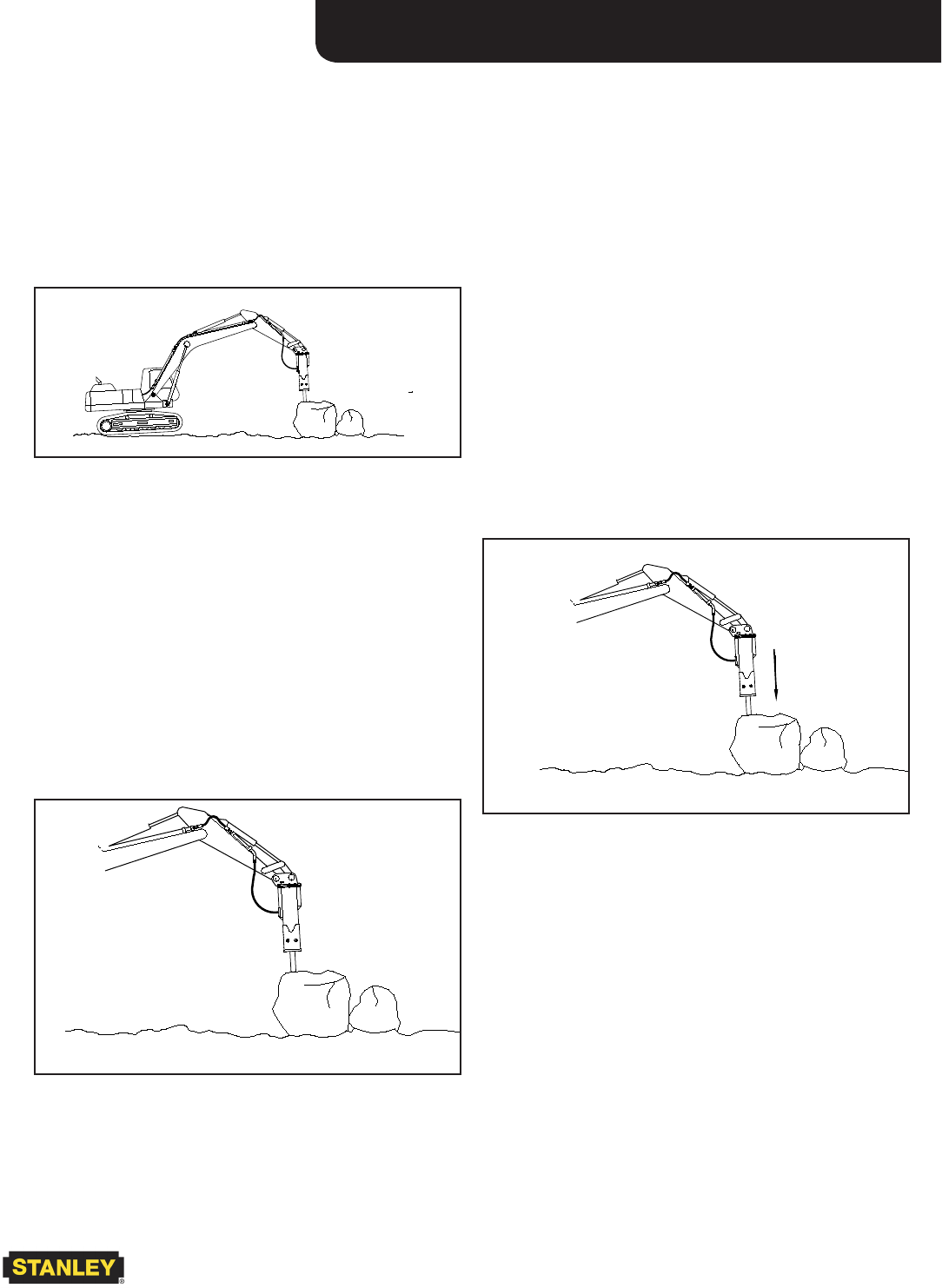
MAXFORCE BREAKER User Manual ◄ 11
OPERATION
PREPARATION FOR USE
Readthesection inthismanualtitledPREPARATION
FORUSEbeforeoperatingabreaker.Failuretofollow
thepreparationinstructionscanresultinseveredamage
tothebreakerandexcavatorandvoidthewarrantiesof
both.
POSITIONING THE EXCAVATOR
Figure4.PositiontheExcavator
With the breaker tool in place on the material to be
worked,positiontheexcavatorsothe dipperisatap-
proximately45°andthebreakerisalmostvertical.The
tracksoftheexcavatorshouldbeinlinewithboomsand
thebreaker.
POSITIONING THE BREAKER TOOL ON
THE WORK MATERIAL
Positionthetoolbitneartheedgeoftheworkmaterial,
notinthecenterorfarfromtheedge.Positionthetool
6-18inches(dependingonthematerial)fromtheedge.
Breakingoffsmallerpiecesofrockorconcreteusually
accomplishesmorethantryingtobreaklargerpieces.
Breakneartheedge
Figure5.PositiontheBreaker
On at material or rock,thebreakershouldbevertical
or“curled”backslightlytodirecttheimpactforcedown-
ward and toward the backhoe. This directs the force
backtowardtheedge oftheworkmaterial.Ifthetool
ispositionedinthecenterofthework,ortoofarfrom
theedge,theenergywillbeabsorbedintothematerial
withoutcrackingit.Donotrunthebreakerlongerthan
15-20 seconds.If breakoutdoes notoccur withinthis
time,movethebreakertoanotherposition.
Onatmaterialsuchasconcreterunways,startingto
breakinthemiddleofthematerialmaycausevibrations
tobetransmittedthroughoutthebreakerandexcavator
becausethematerialhasnoplacetobreakto.Always
tryto startatapoint whichwillpermit thematerialto
breakout.
MAINTAIN DOWN PRESSURE
Maintaininghardcontactwiththesurfaceofthematerial
tobebrokeninadditiontomaintainingadequate"down
force"isveryimportant.Alwayskeep"downpressure"
or"downforce"onthepointofthebreakerbyliftingthe
wheels,tracks,orstabilizersslightlyabovetheground.
This method takesthe "slack" out of thebracket and
boompivots,and reducestheimpactonthe pivotsin
theboom.
Applydownpressure
Figure 6. Maintain Down Pressure
Theoperatorneedstobeconstantlyawareoftheamount
ofdownpressurebeingappliedandbeabletoadjustit
ifnecessary.Notenoughdownpressureresultsinlow
productionandaccelerateswearandtearontheequip-
ment.Toomuchdownpressuremaycausethebreaker
housingtoviolentlycrashintothebrokenmaterialwhen
"break-through"occurs.
Inanybreakingjob,theoperatorshouldmakeeveryef-
fortto“follow”thebreakerwith“down-pressure”asthe
machinebreaks fartherinto thematerial.Thebreaker
shouldbestoppedassoonas“break-thru”occursorifit
isapparentthatgoodsolidblowsarenotoccurring.



